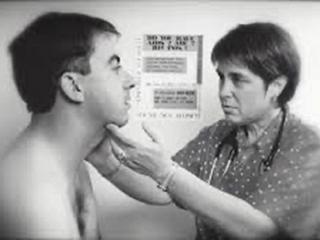
In the 1980s, Dr. Kristen Ries became Utah’s ”AIDS Doctor”, treating >90% of people with AIDS during the epidemic’s first 20 years.
The HIV/AIDS pandemic has now been with us for forty years, and with devastating effects. More than 30 million people worldwide have died - nearly 675,000 in the US alone - and more than 1 million Americans are currently living with HIV. Fortunately, dramatic improvements in medical care have converted HIV from a death sentence into a chronic disease across much of the world.
These improvements reflect transformative advances in HIV research and treatment, ranging from increased access to medical care, the development of powerful new drugs that suppress viral loads and prevent new infections, and great progress in understanding the fundamental biology of the virus and the host immune response. Utahns have made critical contributions to many of those advances, including Dr. Kristen Ries’ and Maggie Snyder’s pioneering early treatment of Utahns living with HIV, Utah Senator Orrin Hatch’s co-sponsorship of the landmark Ryan White Comprehensive AIDS Resources Emergency (CARE) Act, clinical trials required for the development and testing of highly active antiretroviral therapies that have transformed treatment efficacy, advances in fundamental HIV research, and the establishment of free clinics for patient care and distribution of pre-exposure prophylaxis treatments that prevent new infections.
This timeline highlights the many different ways that Utahns have contributed to advancing HIV/AIDS research and treatment. It is being released on August 18, 2020 to celebrate the 30th anniversary of the Ryan White CARE Act - which provided medical access to low income, uninsured, and under-insured people affected by HIV/AIDS and their families – and with the hope and expectation that Utah will continue lead the nation toward the goal of “Getting to Zero” new HIV transmissions and eliminating the scourge of HIV/AIDS.

